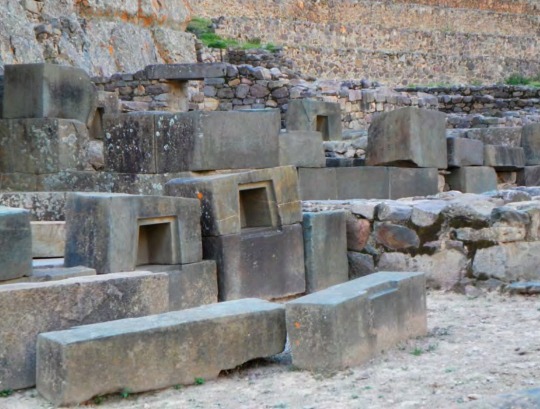#Inka Pachakuti Yupanki
Text
Culto al Sol/Culto al Gobernante Vivo: Ollantaytambo y su señor, Inka Pachakuti Yupanki
Culto al Sol/Culto al Gobernante Vivo: Ollantaytambo y su señor, Inka Pachakuti Yupanki
El sítio arqueológico de Ollantaytambo es hoy más conocido por el Templo de los Seis Monolitos. Dedicado al Sol, este templo está situado en lo alto, sobre el pueblo de Ollantaytambo, en una extensión sureña del Cerro Bandolista. Labrados de riolita rojiza, los seis monolitos son lisos y pulidos; y reflejan la luz fuerte del Valle de Urubamba. Brillan como un faro y están visibles desde todas…

View On WordPress
1 note
·
View note
Text
Though a powerful monarch, the Sapa Inca (“Unique Lord”) did not rule alone. He was counseled by mummies of his immortal ancestors and their other descendants, who all joined him in Cuzco’s most solemn ceremonies and drunken revelry. [...]
Pedro Sancho and Pedro Pizarro, both members of the original expedition, have left us some impressions of the capital (plate 1.1): There is a very beautiful fortress of earth and stone with big windows that look over the city [of Cuzco] and make it appear more beautiful … [The stones] are as big as pieces of mountains or crags … The Spaniards who see them say that neither the bridge of Segovia nor other constructions of Hercules or the Romans are as magnificent as this. (Sancho 1917: 193–4) Most of the people [of Cuzco] served the dead, I have heard it said, who they daily brought out to the main square, setting them down in a ring, each one according to his age, and there the male and female attendants ate and drank. The attendants made fires for each of the dead in front of them … and lighting [them], burned everything they had put before them, so that the dead should eat of everything that the living ate. (P. Pizarro 1986: 89–90) [...]
The Incas’ feats seemed all the more fabulous when the conquistadores heard that the realm was only about four generations old. As the Incas explained it, the empire was launched when Pachakuti usurped the throne from his father Wiraqocha Inka and began to annex the peoples around Cuzco. His successes and organizational genius were followed only by those of his son Thupa Inka Yupanki and grandson Wayna Qhapaq, and then by the final dynastic war (table 1.1). [...]
[...] history was kept as oral tradition, supplemented by mnemonic registers. In Cuzco, poet-historians called amauta and knot-record masters called khipu kamayuq (figure 1.2) recited sagas of the royal past at the bidding of the court. The khipu themselves seem to have encoded information about the past in ways that had as much to do with cultural visions of hierarchy, power, and space as with sequences of events. Aristocrats also memorized epic poems, some of which they recited to the Spaniards. Not surprisingly, the descendants of different rulers called up versions of the past that favored their own ancestors, [...]
Cieza (1967: 32) explained things this way: and if among the kings one turned out indolent, a coward, given to vices and a homebody without enlarging the domain of his empire, it was ordered that of such [kings] there be little remembrance or almost none at all; and they attended to this so closely that if one [king] was found [in the histories] it was so as not to forget his name and the succession; but in the rest they remained silent, without singing the songs [as they did] of the others who were good and valiant. [...]
Many resolved the problem by favoring information provided by their oldest and most aristocratic witnesses and by dismissing reports by common Indians. Those circumstances mean that the documentary history of the Incas has been filtered through competing native views, translators, scribes, conflicting mores, and differing notions of the nature of the past. [...]
Terence D'Altroy. The Incas. Second edition.
14 notes
·
View notes